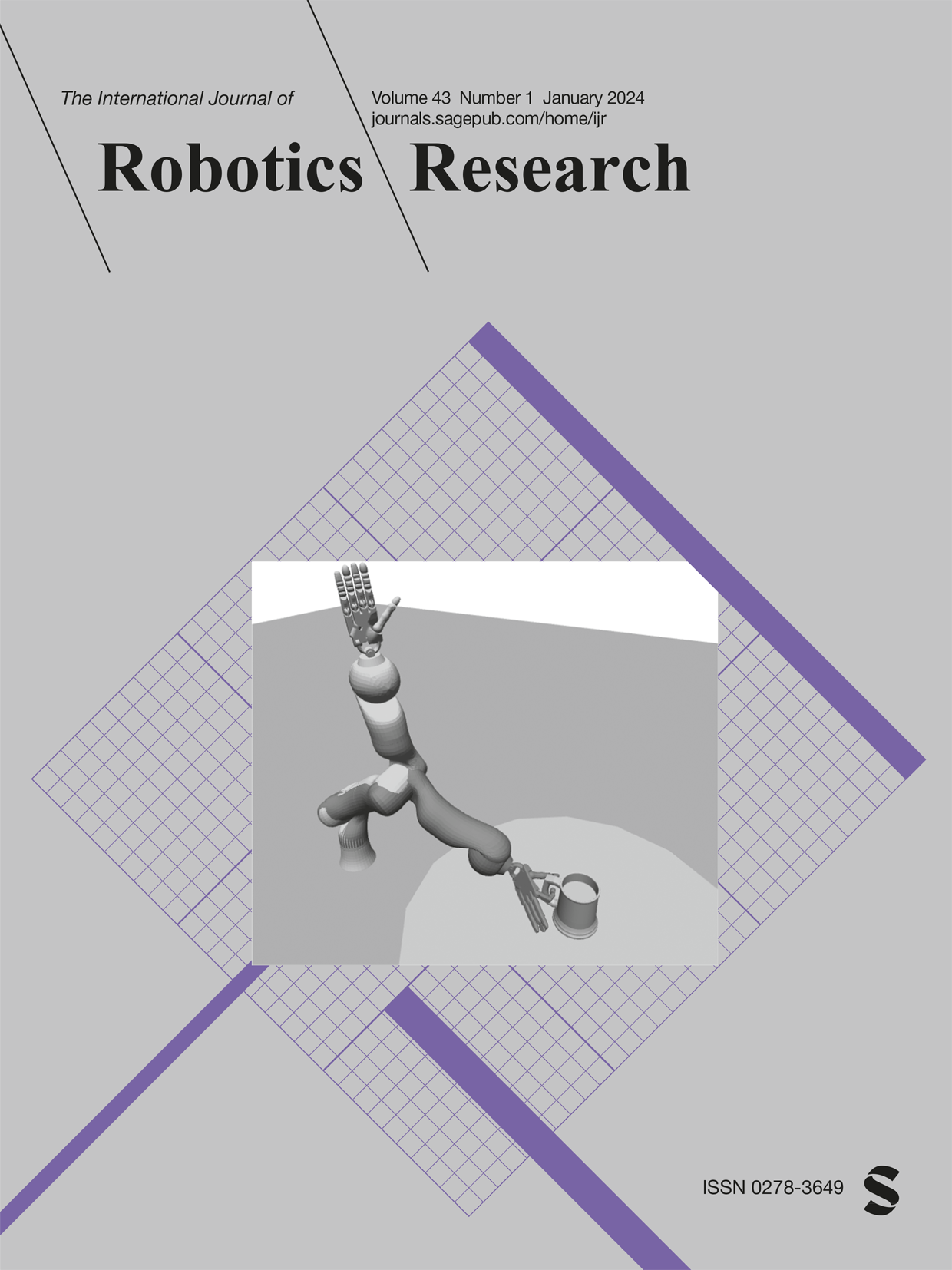基于顺序接触的机器人手自适应抓取
IF 5
1区 计算机科学
Q1 ROBOTICS
引用次数: 3
摘要
本文提出了一种新的抓取策略,该策略的灵感来自于触觉的作用和手腕运动在人类抓取中的重要性。所提出的算法,我们称之为基于顺序接触的自适应抓取,可以根据手和物体之间产生的接触来反应性地修改给定的抓取计划。这种基于系统约束分类和迭代任务反演程序的技术被证明可以导致手指和手腕的同步运动,正如在人类中可以观察到的那样,并且通过大大减轻手部闭合时物体滑动以及由环境和感知系统引起的不确定性的相关问题来提高抓取成功率。在描述抓取问题的准静态方面后,推导了该算法,并进行了简单的仿真讨论。该方法具有通用性,可适用于不同类型的机械手。它改进了先验定义的抓取计划,并通过仅依赖正运动学模型和基本接触信息显著降低了抓取计划的精度要求。实验结果证实了该方法的有效性,该方法在配备了最先进的欠驱动软手的协作机器人机械手上进行了测试。本文章由计算机程序翻译,如有差异,请以英文原文为准。
Sequential contact-based adaptive grasping for robotic hands
This paper proposes a novel type of grasping strategy that draws inspiration from the role of touch and the importance of wrist motions in human grasping. The proposed algorithm, which we call Sequential Contact-based Adaptive Grasping, can be used to reactively modify a given grasp plan according to contacts arising between the hand and the object. This technique, based on a systematic constraint categorization and an iterative task inversion procedure, is shown to lead to synchronized motions of the fingers and the wrist, as it can be observed in humans, and to increase grasp success rate by substantially mitigating the relevant problems of object slippage during hand closure and of uncertainties caused by the environment and by the perception system. After describing the grasping problem in its quasi-static aspects, the algorithm is derived and discussed with some simple simulations. The proposed method is general as it can be applied to different kinds of robotic hands. It refines a priori defined grasp plans and significantly reduces their accuracy requirements by relying only on a forward kinematic model and elementary contact information. The efficacy of our approach is confirmed by experimental results of tests performed on a collaborative robot manipulator equipped with a state-of-the-art underactuated soft hand.
求助全文
通过发布文献求助,成功后即可免费获取论文全文。
去求助
来源期刊
CiteScore
22.20
自引率
0.00%
发文量
34
审稿时长
6-12 weeks
期刊介绍:
The International Journal of Robotics Research (IJRR) has been a leading peer-reviewed publication in the field for over two decades. It holds the distinction of being the first scholarly journal dedicated to robotics research.
IJRR presents cutting-edge and thought-provoking original research papers, articles, and reviews that delve into groundbreaking trends, technical advancements, and theoretical developments in robotics. Renowned scholars and practitioners contribute to its content, offering their expertise and insights. This journal covers a wide range of topics, going beyond narrow technical advancements to encompass various aspects of robotics.
The primary aim of IJRR is to publish work that has lasting value for the scientific and technological advancement of the field. Only original, robust, and practical research that can serve as a foundation for further progress is considered for publication. The focus is on producing content that will remain valuable and relevant over time.
In summary, IJRR stands as a prestigious publication that drives innovation and knowledge in robotics research.

 求助内容:
求助内容: 应助结果提醒方式:
应助结果提醒方式:


